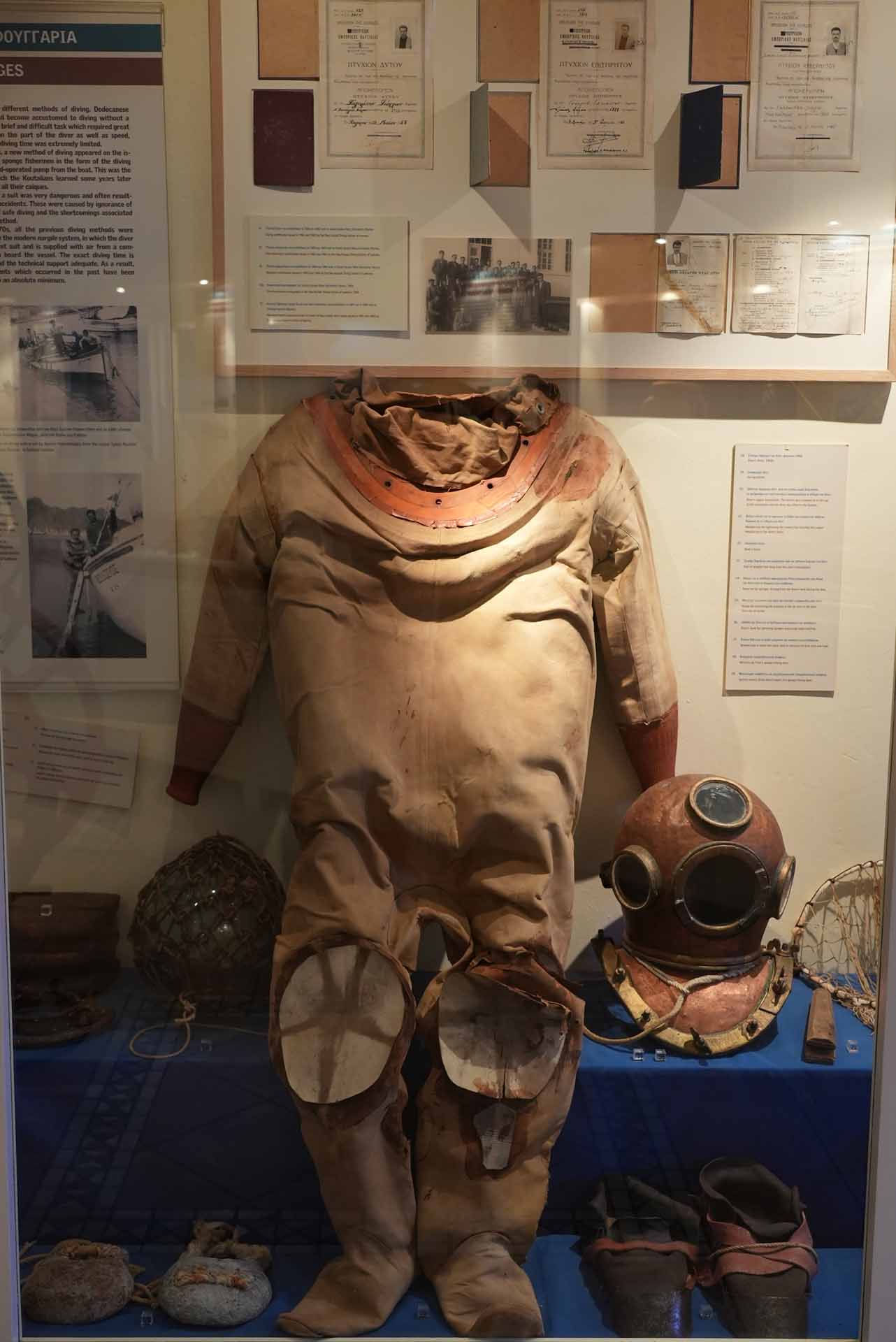At the Sponge Divers Museum of Lemnos in Nea Koutali, the second section of the exhibition showcases aspects of the life of the island’s sponge divers during the 20th century. This includes their personal gear and various tools used during their voyages for navigation, diving, and the processing and cleaning of collected sponges.
For sponge divers, the months between April and October were crucial, as they had to complete as many trips as possible before the winter cold set in. Initially, diving was performed without equipment, as sponges could be found at shallow depths of one or two meters. However, divers soon adopted diving suits, helmets, and oxygen systems. Even with this equipment, diving remained a dangerous procedure. While the diver was underwater, the rest of the crew had to carefully monitor the dive duration and bring the diver back to the surface on time to prevent cases of decompression sickness, a condition that could be fatal.
Onboard the boat, known as a bottis (among other names—typically a small caique with oars and a sail), those not diving worked on the collected sponges. These sponges needed to be cleaned of debris from the seafloor, such as sand, stones, or microorganisms, and their internal juice as they called it had to be removed. Sailors would stomp on the sponges on the deck, rinse them in seawater, and dry them under the sun. This process had to be carried out promptly after collection to prevent the sponges from dying and rotting. Often, sponges were tied in sacks or membranes and submerged in seawater again on the first night after collection.
Sponges not sold directly by the divers underwent further processing by merchants, who would trim, clean, and bleach them before sorting them by quality. The art of sponge collection and processing brought such prestige to Lemnos that, between 1963 and 1970, a State Diving School operated on the island.
In addition to valuable sponges, divers also retrieved remarkable archaeological treasures over the years. These included numerous amphorae, ceramics, tools, and other artifacts spanning a vast period from the Early Archaic to the Late Byzantine era. Many of these items are now exhibited at the Sponge Divers Museum of Lemnos in Nea Koutali.
















